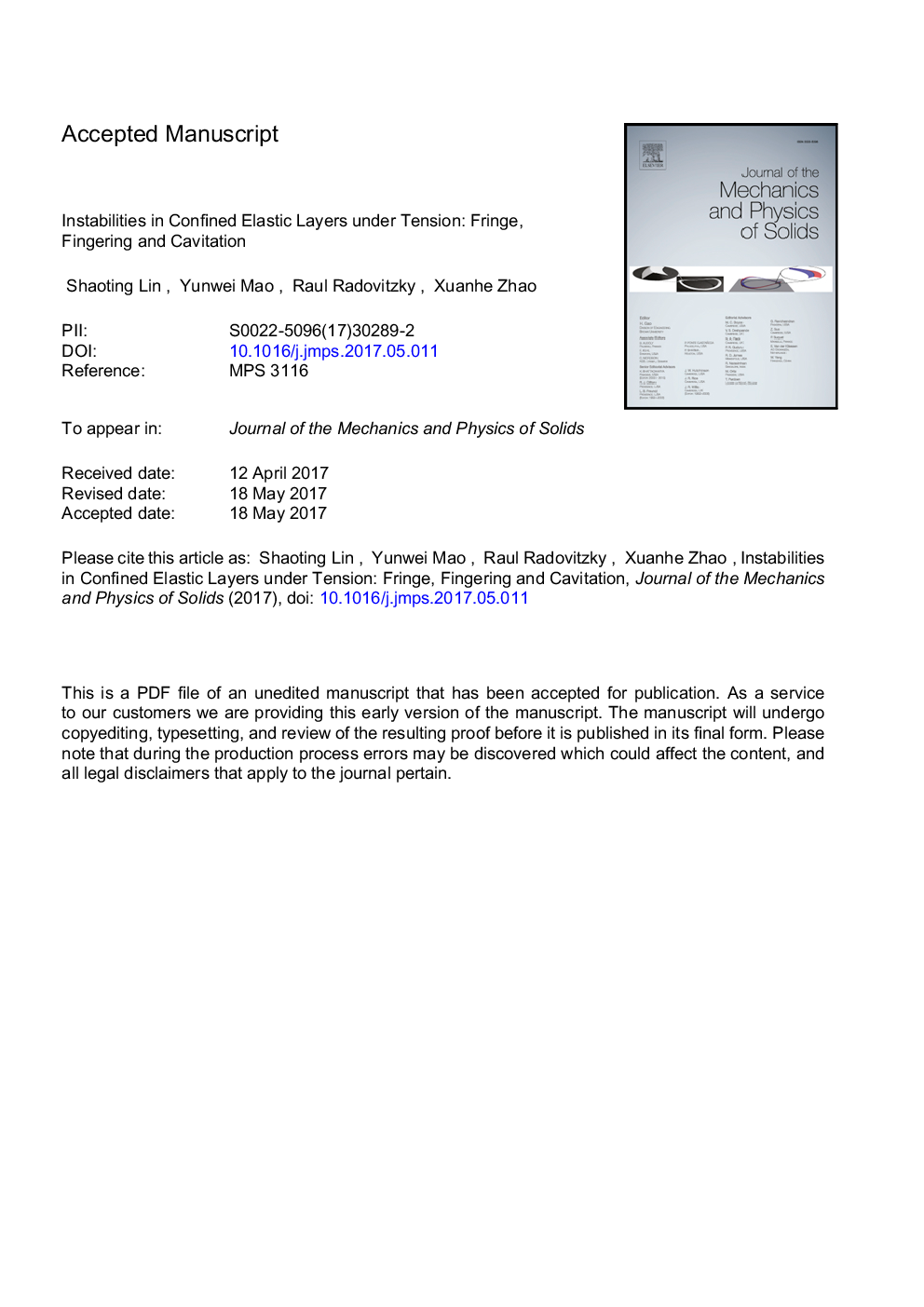| Article ID | Journal | Published Year | Pages | File Type |
|---|---|---|---|---|
| 5018098 | Journal of the Mechanics and Physics of Solids | 2017 | 63 Pages |
Abstract
Under tension, confined elastic layers can exhibit various modes of mechanical instabilities, including cavitation, fingering and fringe instabilities. While the cavitation has been extensively studied, the fingering and fringe instabilities have not been well understood, and the relations and interactions of these instabilities have not been explored yet. In this paper, we systematically study the formation, transition, interaction and co-existence of mechanical instabilities in confined elastic layers under tension. Through combined experimental, numerical and theoretical analysis, we find that the mode of instability is determined by both geometry and mechanical properties of the elastic layer through two non-dimensional parameters: layer's lateral dimension over its thickness and elastocapillary length over the defect size. A phase diagram is calculated to quantitatively predict the occurrence of any mode of instability. We further show cavitation instability and fingering instability can coexist and interact with each other in one elastic layer. The current work can help the design of robust adhesives by rationally harnessing the desired mode of instabilities while suppressing the other modes.
Related Topics
Physical Sciences and Engineering
Engineering
Mechanical Engineering
Authors
Shaoting Lin, Yunwei Mao, Raul Radovitzky, Xuanhe Zhao,
